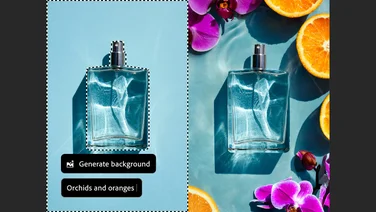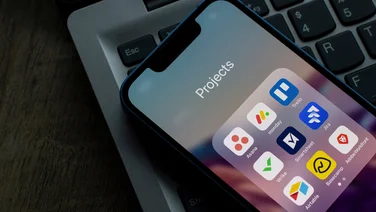To help us provide you with free impartial advice, we may earn a commission if you buy through links on our site. Learn more






Tablet computers’ expansion from media consumption to creation shows no sign of slowing, and Photoshop Touch is one of the most sophisticated creative apps to date. It was launched for Android back in October, and arrives for iPad just in time for the launch of the third-generation model. Disappointingly, it doesn’t support the first-generation iPad, even though other image-editing apps such as Snapseed and Photogene run fine on it. Even more disappointingly, the interface hasn’t been optimised for the third-generation iPad’s high-resolution screen, with text, graphics and even the image being edited appearing a little blocky. Hopefully this will be resolved soon.

Selectively applying colour correction in brush strokes is one of the highlights of this app
The editing environment strikes a sublime balance of Photoshop-like sophistication and iPad-inspired touchy feely operation. The layout of toolbox, menu and layers palette feels immediately familiar, and operational differences to full-fat Photoshop are quick to get used to.
Inevitably, a £7 app doesn’t offer the same features as a £600 application, but there’s much more editing power here than the price suggests. There’s support for up to 16 layers, with a choice of nine blend modes. Layer masks aren’t available but it is possible to apply a gradual linear or radial fade. There’s a strong set of tools for selecting part of an image, including Magic Wand and a Feather control to soften edges. Colour correction is comprehensive, and there’s a decent selection of creative effects. Distortion effects are thin on the ground, with no Liquify or even a basic Pinch/Punch, but the Warp tool goes some way to compensating.

Avian fun with the Warp tool
There are some unique strengths, too, such as the ability to preview a live feed from the iPad’s camera inside a selected area of the project – perfect for rough-and-ready Photoshop montages. It’s also possible to apply various effects as brush strokes – not just Dodge and Burn but also Curves, Color Balance, Temperature and creative effects such as Pencil.
The touchscreen interface lends itself well to brush strokes but it’s not so practical for making careful edits with the Eraser or Lasso tool, as your finger obscures the screen. We also found that adjusting the brush size was a little confusing, as the size that’s shown doesn’t reflect how zoomed in the image is. That’s not an issue in desktop software controlled with a mouse, as the brush size is shown when the cursor hovers over the image and changes as you zoom in and out, but this isn’t possible with a touchscreen.
Other limitations are more significant. The maximum dimensions for a project are 1,600×1,600 pixels, and anything larger is resized on import. That equates to about 2 megapixels for 4:3-ratio photos. This is presumably to optimise performance, but we prefer software that lets us do what we want and suffer the consequences. Perhaps this isn’t the iPad way.
With Apple’s refusal to allow direct access to the iPad’s storage, copying files back and forth isn’t as straightforward as it could be. Adobe gets around this with its Creative Cloud service, which gives you 2GB cloud storage for passing files between the app and desktop computers.
We had no problem uploading JPEG, BMP, GIF, PNG and PSD files (but not TIF) using a desktop browser and importing them directly into Photoshop Touch. However, while transparency was maintained in PSD, PNG and GIF files, PSD files’ layers were flattened on import. We could send projects from our iPad to a desktop computer via Creative Cloud and maintain separate layers, but the PSDX format used is only compatible with Photoshop CS5.

With Photoshop Touch’s ability to splice together photos using a live camera feed, you can expect to see quite a lot of this sort of thing on Facebook from now on
If you don’t need access to separate layers, then import and export options are much more plentiful. The app can send images to and from Facebook, and pull them directly from Google Image search, complete with options for copyright status, image type (from a choice of Face, Photo, Clip art and Line drawing) and dominant colour. There’s a bug, though – If you select dominant colour as a search type the software gets stuck and refuses to let you change back to a normal search. We have contacted Adobe for a comment. It’s also possible to transfer to and from the iPad’s camera roll. Raw images aren’t officially supported, but if the iPad can view them – and it usually can if the raw file contains an embedded JPEG – then so can Photoshop Touch. There’s no access to the actual raw image data, but that’s hardly surprising considering the resolution limit.
These drawbacks – particularly the 1,600×1,600 pixel limit – restrict Photoshop Touch’s suitability for serious use. It could be used for mobile graphic design, but a PC or Mac running Photoshop seems a better option. Meanwhile, photographers who want to perform colour correction on an iPad are better off with Photogene with its non-destructive effects and support for full-resolution images. Photoshop Touch has its niche, though. With its elegant handling of layers, abundant source of clip-art from Google and live camera feed, it excels at producing photo montages. The fact that they’re more likely to end up on Facebook than in a glossy magazine isn’t necessarily a criticism.
| Details | |
|---|---|
| Price | £7 |
| Details | www.adobe.com/uk |
| Rating | *** |





